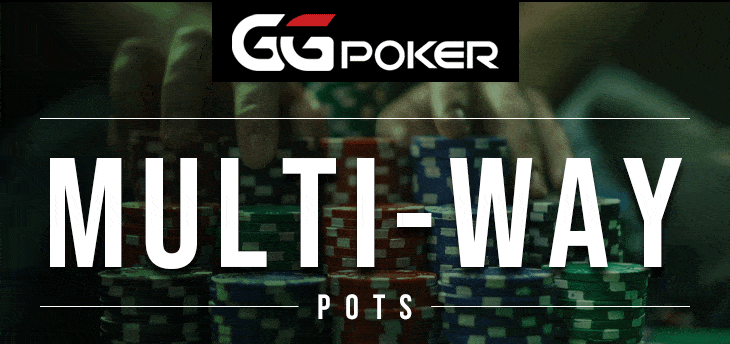Multi-Way Pots

When playing poker, particularly online poker, the complexity of a hand escalates notably when the number of players that opt to see a flop increases. Multi-way pots – pots involving three or more players – are not just about holding the right cards; they require a deep understanding of table dynamics, player tendencies, and more. So, how can one start to master these extremely busy and complicated hands?
Understanding Multi-Way Dynamics
Multi-way pots are a stark contrast to the straightforward nature of heads-up play. In these scenarios, the texture of the game changes significantly. More players mean more variables and an increased likelihood of making a mistake, misreading an opponent, and that someone has connected with the flop. But why exactly does this matter?
To start with, the addition of more players will often dilute the strength of your hand. Even strong starting hands like AQ, JJ, or better might find themselves in trouble against multiple opponents. This is where the first strategy comes into play: hand selection. Preflop, it is crucial to choose hands that can make big pots and big hands but are easy to get away from if you miss.

Adjusting Your Strategy
- Hand Selection: In multi-way pots, premium hands still reign supreme, but suited connectors and pocket pairs gain significant value because of their potential to hit strong combinations like straights, flushes, or sets while remaining hidden.
- Position Matters: Being in a late position allows you better optics on how many players are still in the pot and how they act before you have to make a decision. In a game of limited information like poker, this knowledge is gold.
- The Art of Folding: Sometimes, the best play you can make is to fold. In most multi-way scenarios, you will find yourself holding a marginal hand and facing significant action. When this happens, the best thing you can do is to step away. By having the mental strength to fold, you will save your chips for a more advantageous situation.
Psychological Play and Player Reading
Poker is more than just a card game; it’s a mind game. In multi-way pots, understanding the psychology of your opponents is vital. Are they aggressive or passive? Do they bluff often? How do they react under pressure? Having the correct answers to these questions and more can provide a significant edge.
Pot Odds and Expected Value
Every decision in poker comes down to maximizing expected value. This is where the concept of pot odds comes into the picture. Calculating whether the money in the pot justifies your potential investment can be the difference between a profitable call and a costly fold.
The simplest way to think about pot odds is:
- Calculate your chances of winning versus the number of players.
- Compare the potential return with the risk – the amount in the pot compared to the bet you are faced with calling.
If the pot odds favor you, then a call might be the correct decision. However, you will need to amend this calculation based on the tendencies of your opponents and the likely range of hands they could hold.
Bluffing in Multi-Way Pots
Bluffing works differently in multi-way pots. The more players in the pot, the higher the chance someone has a hand that they won’t fold. Strategic semi-bluffs can be effective, particularly if you have outs to improve on later streets and are in a good position or if you need to get rid of some of the weaker hands that could potentially outdraw you later. But remember, bluffing isn’t about deception alone; it’s about telling a good story, timing, and understanding the flow of the game.

The Importance of Adaptability
As the hand progresses, the ability to adapt your strategy based on new information is what sets apart the good players from the great ones. Each betting round will provide insight into your opponents’ hand strength. You will need to use this information to constantly reassess your relative hand strength and strategy.
When to Press the Advantage
On those occasions when you have a strong hand in a multi-way pot, your goal shifts to maximizing value. This change in ideology should affect your strategy, which should focus on extracting the most chips from your opponents and how best to protect yourself.
- Size your bets to protect your hand against draws.
- Keep the players with weaker hands in the pot.
- Be wary of overcommitting in precarious situations.
Conclusion
In the realm of poker, when you find yourself in a multi-way pot, you need to remember the game transcends basic probability and card analysis. It becomes a sophisticated dance of strategy, psychology, and decision-making. Whether you’re playing live games or online poker, understanding these elements can dramatically elevate your game. Remember, every session is a learning opportunity, and every hand is a chance to refine your approach.
The complexity and thrill of navigating multi-way pots in poker encapsulates why this game continues to captivate and challenge players around the world. Harnessing these strategies will bolster your confidence at the table and enhance your overall play. So next time you’re in a multi-way pot, remember these strategies and play your cards to their maximum value.





